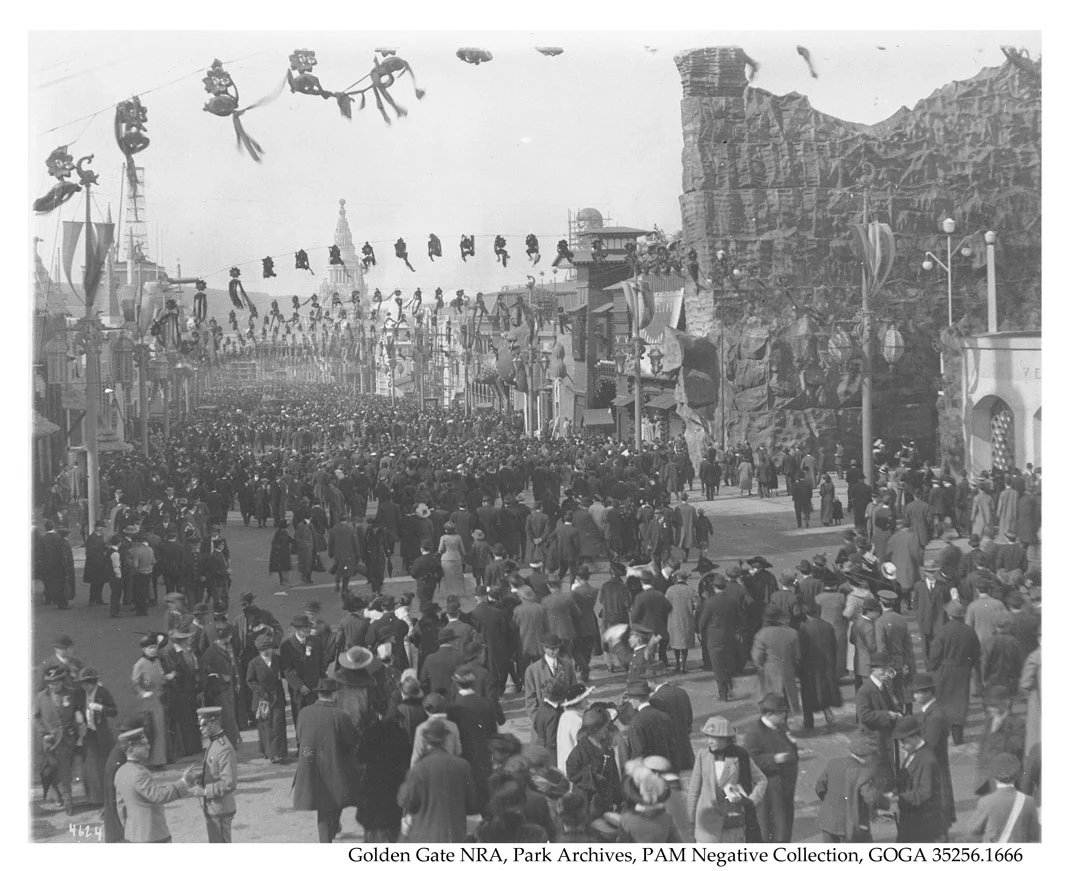
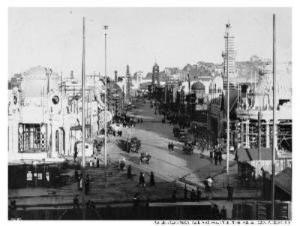
Since the Chicago world’s fair, carnival-like entertainment areas had become standard inclusions. The Panama-Pacific International Exposition would be no different. “The Joy Zone” was sequestered, for better or worse, at the most easterly end of the exposition grounds on Fort Mason lands. It ran along Chestnut Street from Fillmore Street to Van Ness Ave. The Zone and its many concessions, exhibits and rides were fairly grand in scale-perhaps too grand in the end. At sixty five acres and a cost of approximately $3,500,000, The Zone was the largest exposition amusement park ever built. The Zone was ultimately considered by many to be a failure in both attendance and financial respects while garnering a reputation which has led to it becoming one of the expositions most controversial elements. Prior to opening day, the Zone was already experiencing issues. While many of the companies contracted to do business on The Zone hurried to prepare the best possible exhibition, a fair number were dragging their feet. In May of 1914, the Concessions and Admissions Committee decided to confront those many delinquent concessionaires. They inquired as to why they were so behind and threatened to terminate the contracts. By October, approximately 100 of them were gone. The determination of the committee prevailed, however, and by opening there was no sign that such issues existed, aside from some cleverly disguised facades. 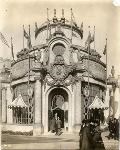
Visitors were welcomed to The Zone by Ghirardelli’s Chocolate and Welch’s Grape Juice, which were positioned on either side of the entry gate. The Zone’s main street was 100 feet wide and 3360 feet long. Its size lent well to parades and so it was the site of many over the life of the fair. Some of the largest attractions The Zone featured were scale replicas of renowned natural and man-made wonders. The Atchison, Topeka & Santa Fe Railway contributed a Grand Canyon which occupied approximately five acres. A pueblo sat atop the roof of the entrance building. It was occupied by Native Americans throughout the duration of the Exposition. The Zone also boasted functional replicas of the Panama Canal and Yellowstone Park. The Yellowstone exhibit had an Old Faithful that shot off at regular intervals. 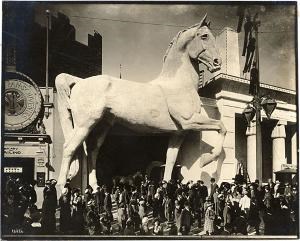
The Zone hosted a myriad of “living exhibits”. Both humans and other animals from around the globe were brought to inhabit them. Native Americans, Samoans, Maoris, Somalis, Japanese, Chinese and Egyptians were among the represented while ostriches, alligators, manatees, alligators, lizards and opossums were among the many animals. Animals were used in many different exhibits. There were alligator wrestling demonstrations were hosted by… Simulated bull fights were held due to the public’s aversion towards the type of gore normally associated with them. The same exhibit had a wild west show including shoot outs and a rodeo until they folded mid-exposition. Two giant ostrich statues welcomed visitors to the ostrich farm exhibit where they could view live ostriches and buy ostrich feather goods. One exhibit featured a genius horse named Captain Sigsbee whom could count, match colors, ring bells to play music and answer questions by stamping his hoofs. 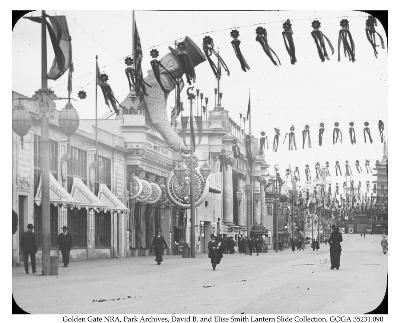
The Zone was home to many “villages”. These villages were intended to be realistic displays of people from around the globe. The Maoris, Somalis, and Samoans struggled to remain open while the Grand Canyon’s inhabitants survived thanks to their corporate sponsor. Woeful attendance, due to lack of interest and the overtly offensive nature of many of the villages, led to the closure of many of them long before the fair. While the Samoans left voluntarily after much effort to remain, the Somali Land inhabitants were asked to leave once their plot had been leased to a new vendor. When the Somali people were unable to find their way from the fair due a lack of funds, they were escorted from the fairgrounds, taken to Angel Island, and deported. Racism also permeated the Zone exhibits such as: stereotypical representations of African Americans, inaccurate reproductions of slave life in the south, and the depiction of the many “dangers” of Chinatown. Constant complaints to management and poor sales led to heavy turnover in Zone occupants. As many concessionaires closed down, they leased their spaces which were taken over by gambling parlors and explicit live shows which required constant intervention. A single person could have spent 24 hours a
day at the expo - every day the expo was open - and still not have seen it
all... Visit the Exposition Palaces where the
world showcased their very best Head west of the main exposition grounds to
visit the State Buildings Take a tour of the world as you walk along
the Avenue of Nations and view the Foreign Pavilions The Presidio has a long military history. See
how the Military's Role shaped the
expo. Visit the most sensational sixty five acres
at the exposition along The "Joy" Zone Aviators, athletes and drivers competed
during the year of the exposition in many types of Sports and Athletics
For More Information: To see more photos and maps, please visit the Panama-Pacific International Exhibition home page. To learn more about the events leading up to the fair, visit Prologue to the Panama-Pacific International Exhibition. To learn about the legacy of the Panama-Pacific International Exhibition and its impact on San Francisco, please visit The Legacy of the Panama-Pacific International Exhibition. |
Last updated: February 28, 2015
